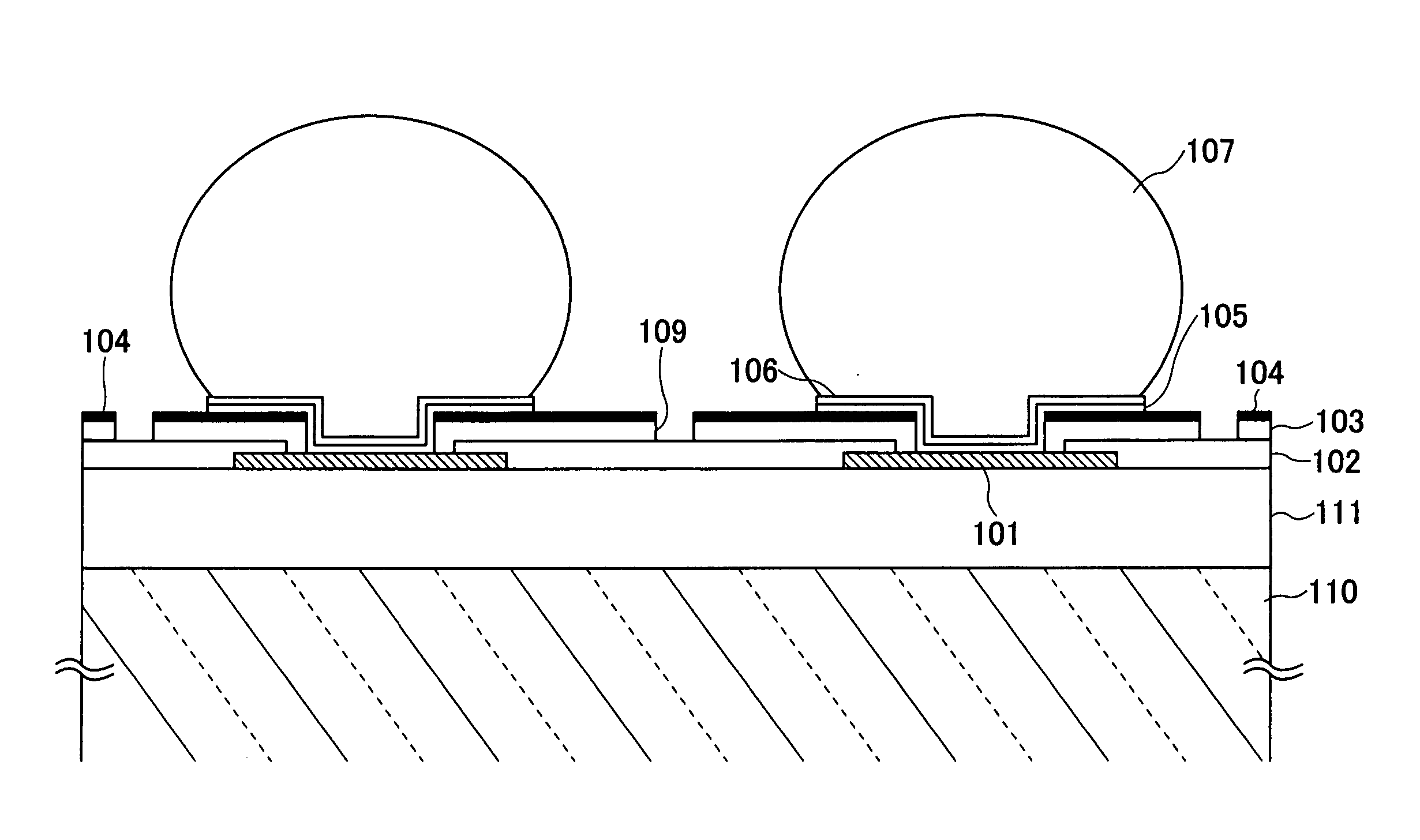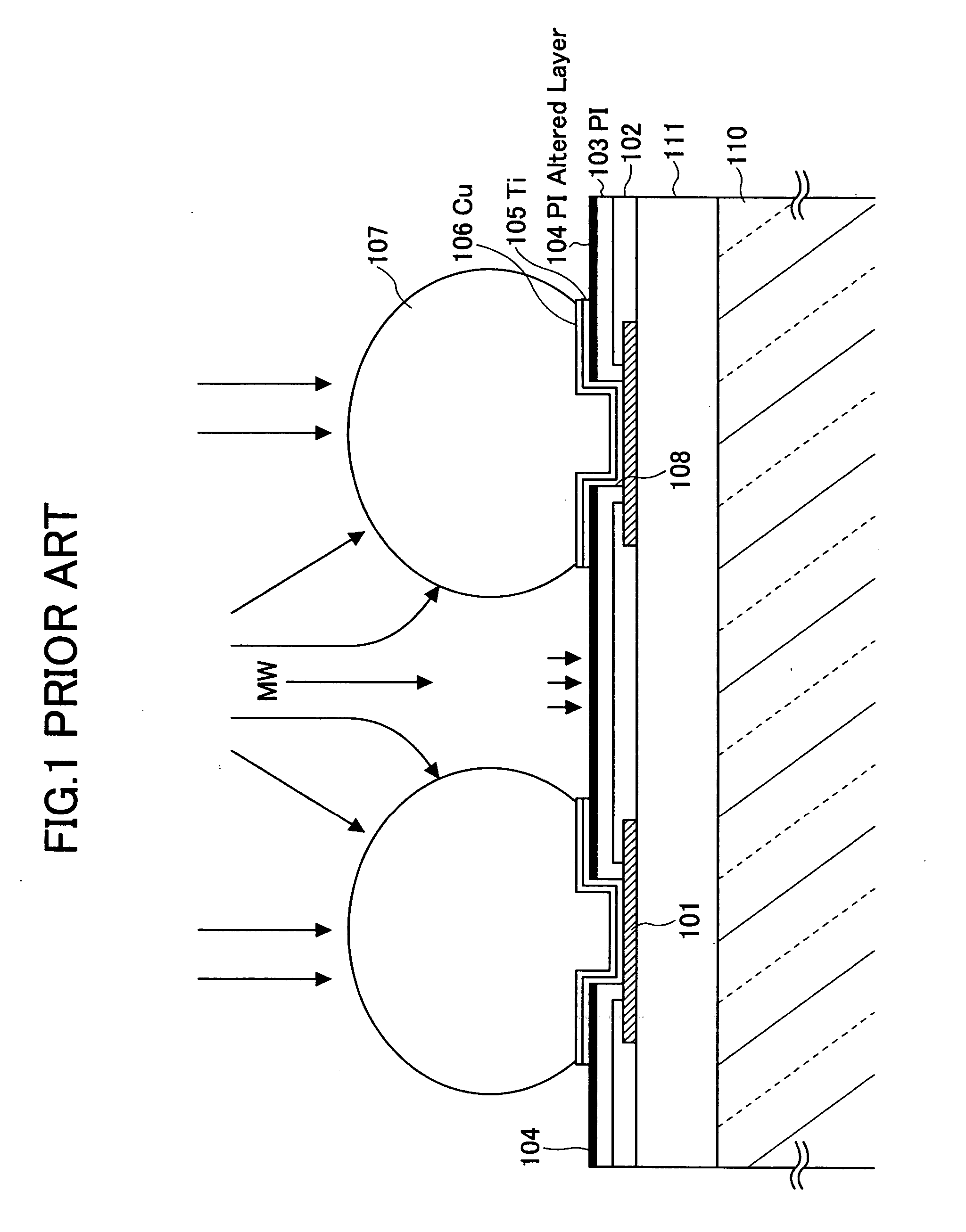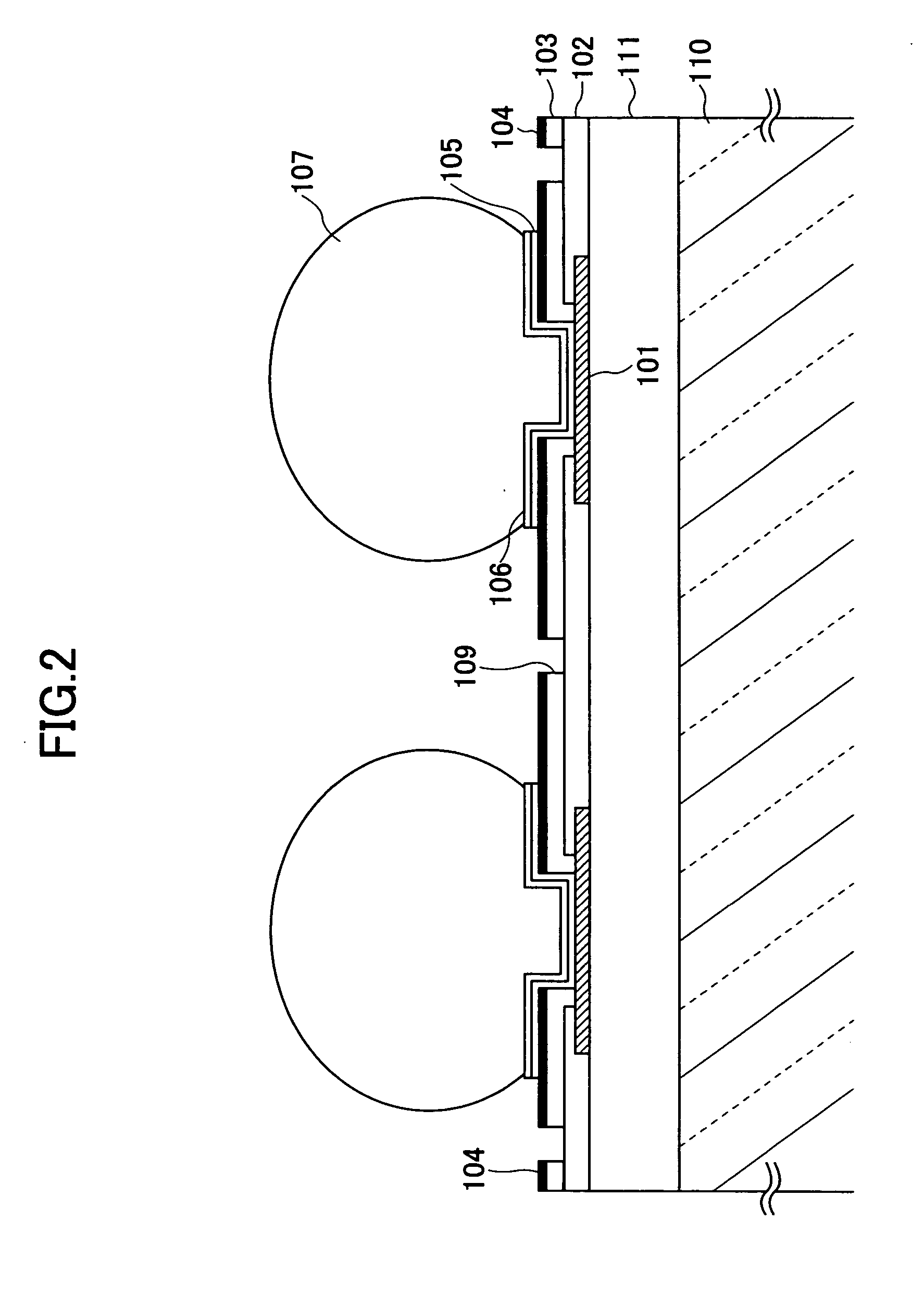Semiconductor device and fabrication method thereof
- Summary
- Abstract
- Description
- Claims
- Application Information
AI Technical Summary
Benefits of technology
Problems solved by technology
Method used
Image
Examples
first embodiment
[0043]FIG. 3A through FIG. 3F illustrate a semiconductor device fabrication process according to the invention.
[0044] First, as illustrated in FIG. 3A, aluminum (Al) pad 11 is formed at a prescribed position on a semiconductor wafer 20 in which internal circuits (not shown) are formed and covered with dielectric layers. The pad 11 provides electric connection with the internal circuit. The pad 11 and the entire surface of the semiconductor wafer 20 are covered with a passivation film (cover film) 12. An opening is formed in the passivation film 12 so as to expose the surface of the Al pad 11. Then, a photosensitive or nonphotosensitive polyimide overcoat (organic coat) 13 is formed over the exposed Al pad 11 and the passivation film 12. The thickness of the polyimide film 13 is 1 μm to 20 μm, depending on the design. A prescribed position of the polyimide film 13 is etched to form an opening 23 so as to expose the Al pad 11. Then, radio-frequency RF etching is performed as pretreatm...
second embodiment
[0068] In the second embodiment, a wet process is carried out, prior to the dry process, to remove the titanium (Ti) particles implanted in the altered layer 14. This arrangement allows existing microwave (MW) ashers to be used for the removal of the altered layer. However, it is desired to employ RF etching even when the dry process is combined with the wet process, taking into account the overetch depth and the surface degradation (such as tarnish) of the polyimide layer 13.
[0069]FIG. 6A though FIG. 6C illustrate a modification of the semiconductor device fabrication process of the second embodiment. The step shown in FIG. 6A follows the step shown in FIG. SD.
[0070] In FIG. 6A, reflow treatment is carried out after the unnecessary portions of the Cu film 16 and the Ti film 15 have been removed, thereby forming a bump or protruding electrode 22. After the reflow, light wet etching is performed using 0.5% hydrofluoric (HF) acid to remove the titanium (Ti) particles implanted into t...
third embodiment
[0087] In the third embodiment, the altered layer 14 is removed following the under bump metallization, and therefore an existing microwave (MW) asher can be utilized. By providing the gold (Au) thin film on the top of the UBM, certain types of oxygen-mixed gas may be used for the microwave ashing. However, using oxygen-free etching gas is preferable from the viewpoint of preventing oxidation on the side edge of the nickel (Ni) plating layer 18.
[0088]FIG. 9A and FIG. 9B illustrate a semiconductor device fabrication process according to the fourth embodiment of the invention. In the fourth embodiment, removal of an altered layer is applied to the formation of a copper (Cu) interconnection on a redistribution layer (RDL).
[0089]FIG. 9A includes a cross-sectional view and a top view of a redistribution layer in which a copper (Cu) interconnection 31 is formed with the altered layer 14 remaining on the wafer.
[0090] Prior to forming the copper (Cu) interconnection 31, an aluminum (Al) p...
PUM
 Login to View More
Login to View More Abstract
Description
Claims
Application Information
 Login to View More
Login to View More - R&D
- Intellectual Property
- Life Sciences
- Materials
- Tech Scout
- Unparalleled Data Quality
- Higher Quality Content
- 60% Fewer Hallucinations
Browse by: Latest US Patents, China's latest patents, Technical Efficacy Thesaurus, Application Domain, Technology Topic, Popular Technical Reports.
© 2025 PatSnap. All rights reserved.Legal|Privacy policy|Modern Slavery Act Transparency Statement|Sitemap|About US| Contact US: help@patsnap.com



